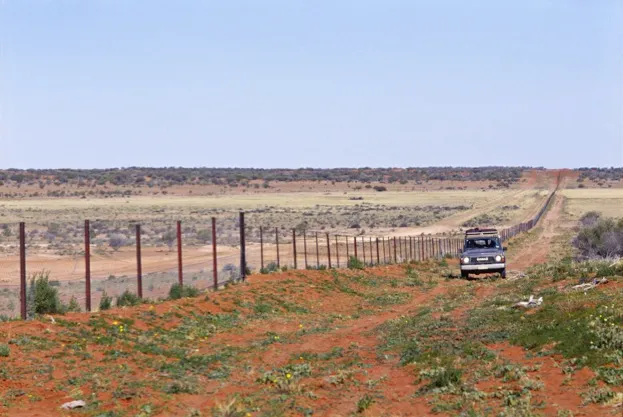A dingo-proof fence, stretching 5,600km across the Australian outback, has provided an inadvertent opportunity for a scientific experiment to determine the affect dingos and kangaroos have on their environment.
The result of the fence is that “two completely different ecological universes have emerged,” according to Michael Letnic of the University of New South Wales, who led the study along with colleague Timothy Morris.
The fence, which has stood for more than a century, was erected in order to keep livestock safe from dingos.
Over time, obvious differences have emerged between the two sides: kangaroos were far more numerous on the non-dingo side of the fence, with the researchers spotting 3,200 kangaroos, and just one dingo; on the other side, 85 dingos were counted, and eight kangaroos.
Kangaroos are dingos’ preferred prey — without the predators to affect their numbers, the kangaroo population booms.
Crucially, the study found that disparity between the numbers of these mammals on each side of the fence seem to have had a direct impact on the type of vegetation growing, and the abundance of plants between the two sides.
More grass was found on the dingo side, while more woody vegetation such as trees and shrubs grew on the kangaroo side.
Letnic’s theory is that kangaroos move nutrients away from grasslands as they spend their time resting under trees during the day, depositing nutrients from grassy areas into wooded areas when they defecate.

The dingo-proof fence at Cameron's Corner, South Australia. © Warwick Kent
To experiment further, Letnic and Morris created eight plots, including a pastoral site and a national park site, each 11 metres square, on each side of the fence in the Strzelecki Desert.
Four plots on either side were then closed off to kangaroos in order to determine how, and whether, they affect the vegetation.
The two found no real difference in vegetation on the dingo side of the fence, while on the other, kangaroo-free plots had around 12 percent more vegetation cover.
Further to that, the fenced off plots were found to have more soil carbon, phosphorus and nitrogen.
Their findings, they argue, demonstrate that the removal of an apex predator leads to the boom of their preferred prey, leading to intense grazing that affects the entire ecosystem, from the herbivores, to the vegetation, and the even the nutrients of the soil itself, leading to poorer soil quality.
"We show that removal of dingoes leads to a trophic cascade that extends right down to the depletion of soil nutrients,” says Letnic. “Allowing dingo populations to increase could enhance the productivity of ecosystems across vast areas of the country by reducing herbivore numbers.”
Read the full paper on Proceedings of Royal Society B.


